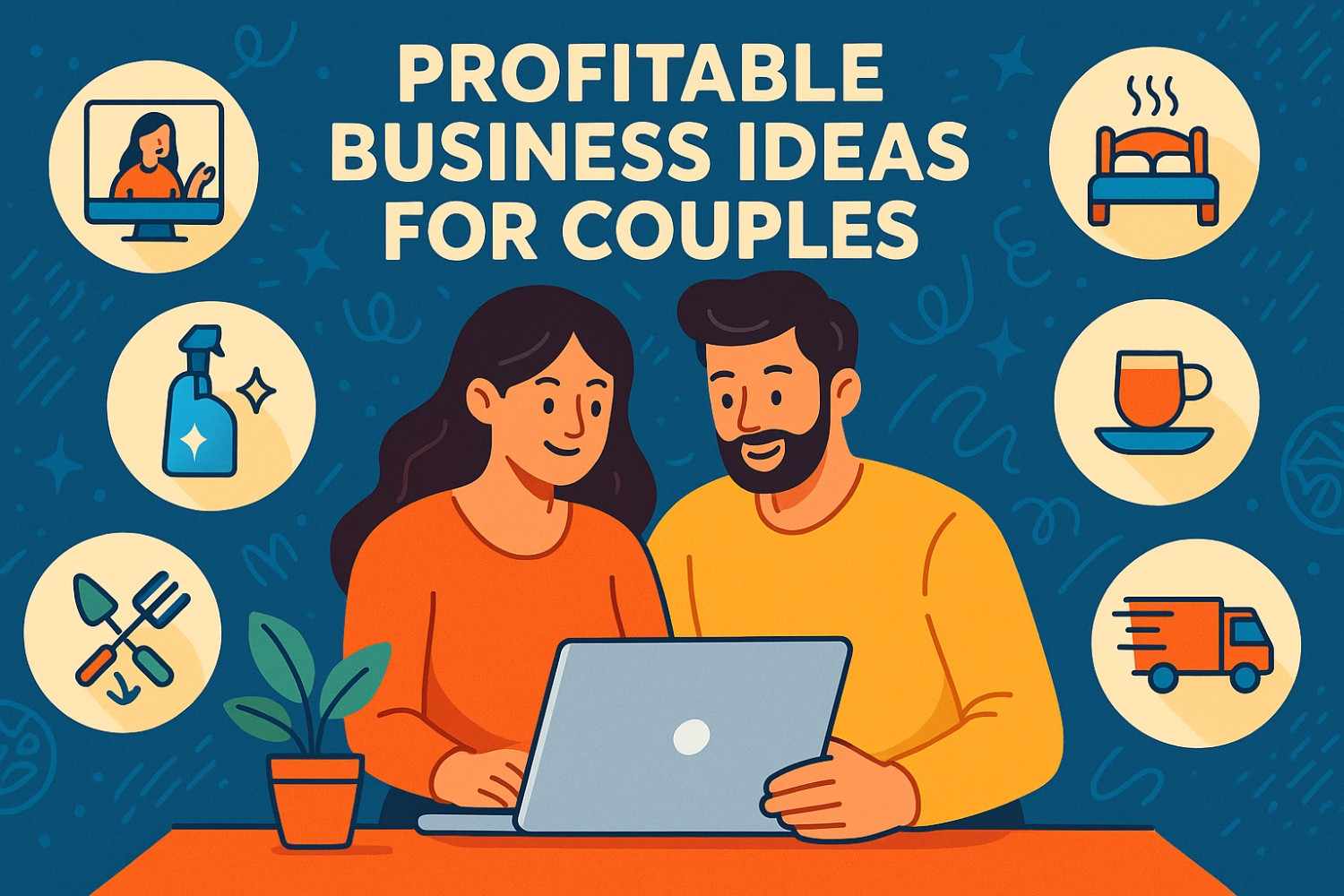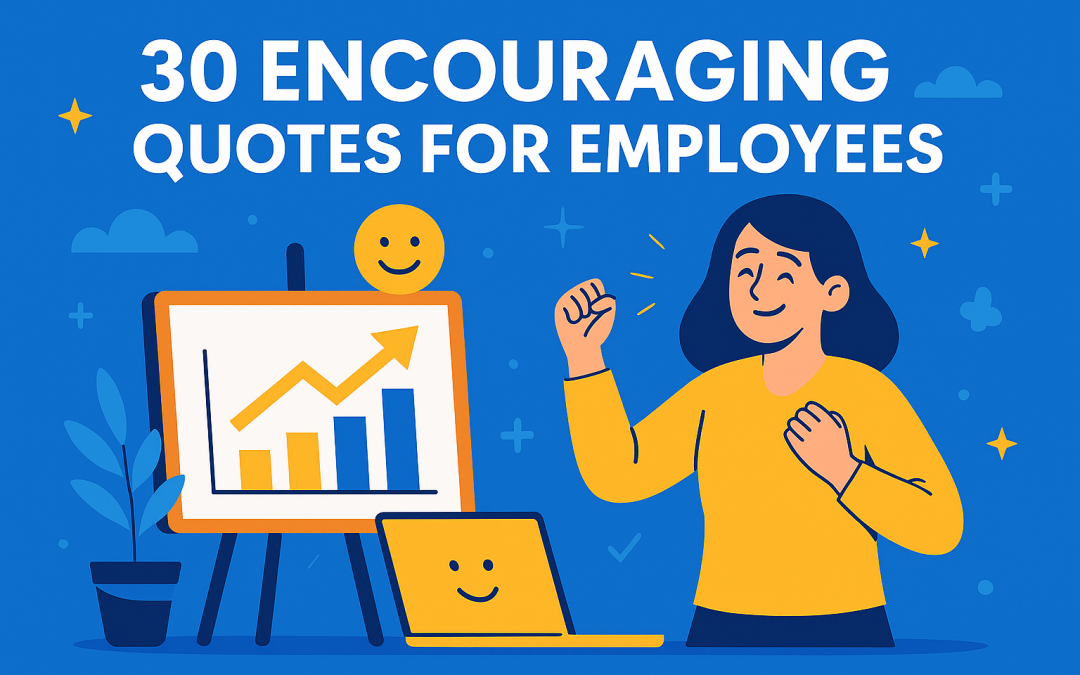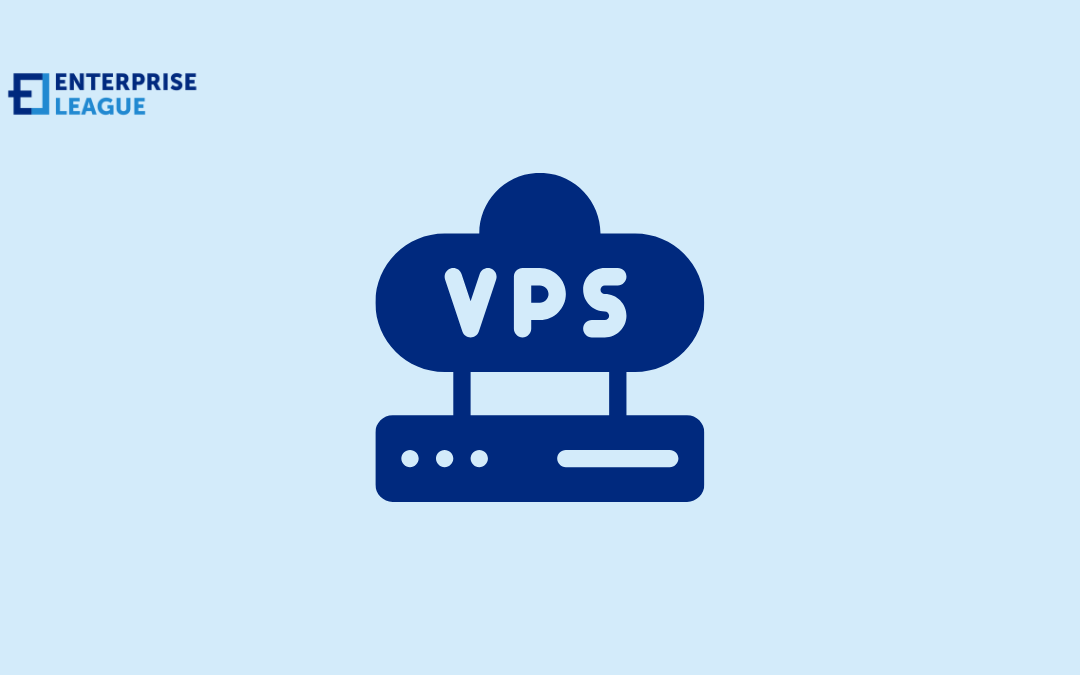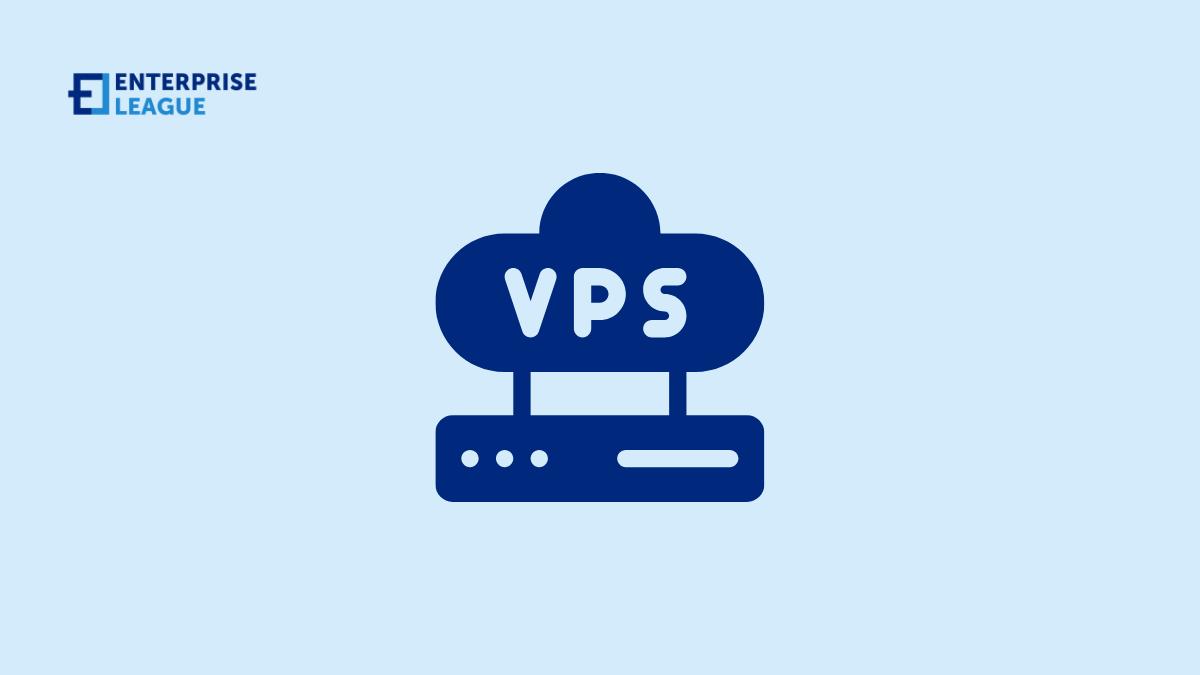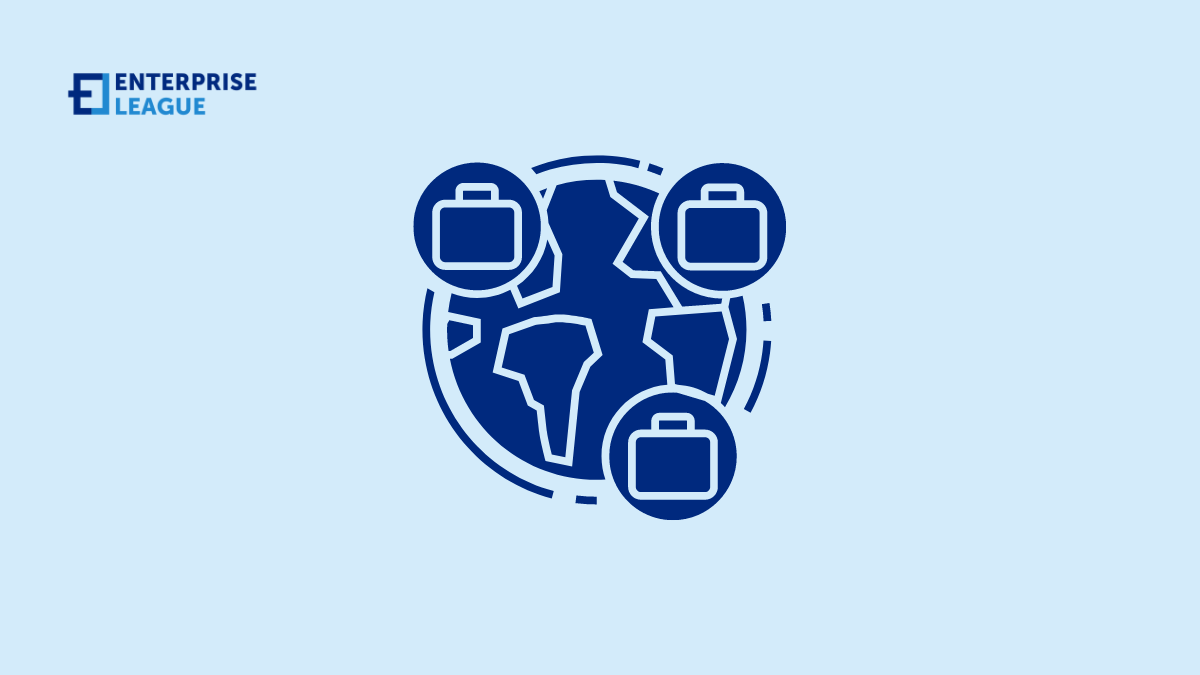If you're operating a business in Australia, it's in your best interest to invest in the right tools to give you an advantage in your respective field. One tool that many local entrepreneurs often overlook is a business number, particularly an 1800 number. 1800...
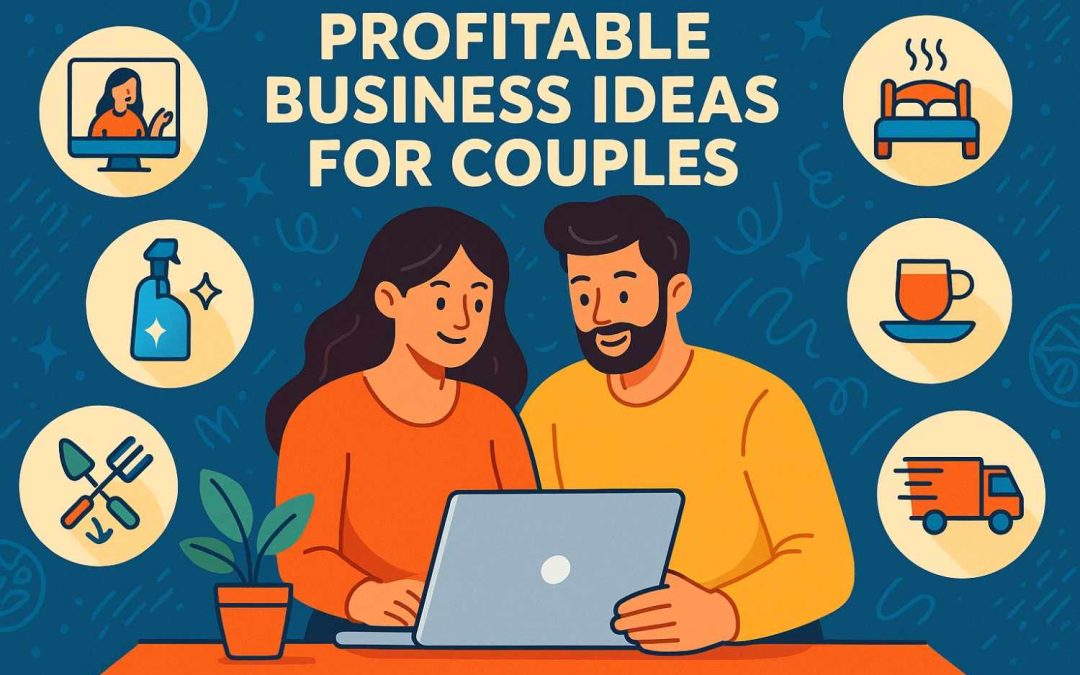
14 Profitable Business Ideas for Couples in 2026
Launching a business as a couple presents a unique opportunity to blend personal strengths and shared visions into a successful enterprise. For couples, the business journey is not just about financial success, but also about strengthening their partnership and achieving common goals.
According to a Harvard Business Review feature, couple-run businesses often benefit from complementary thinking, higher emotional resilience, and stronger collaboration. That mix of logic and love can become a real competitive advantage, especially in industries that reward creativity and communication.
The key to success for couple-run businesses lies in clear communication, defined roles, and a shared commitment to both their professional and personal relationship.
Quick Take: A Partnership with Purpose
Running a business together can transform teamwork into a superpower. These 14 couple-friendly ideas combine flexibility, profitability, and purpose, perfect for partners who want to grow side-by-side.
14 Profitable Business Ideas for Couples to Grow Together
Here are some profitable business ideas that couples should take in consideration:
Consultancy
Consultancy is a professional advisory service that provides expertise to help organizations and individuals achieve goals or solve issues in specialized areas. By hiring consultants aligned to current needs versus permanent staff, clients access seasoned guidance tailored to address specific situations cost-effectively. Consultants bring an objective third-party perspective along with extensive experience diagnosing all types of contexts from startup hurdles to mature business growth opportunities.
The niche focus consultancies develop allows for providing executable plans to progress client outcomes faster through research-backed best practices rather than internal gradual learning alone. Areas span widely from marketing consultants guiding campaign direction to HR advisors enhancing hiring and culture fit.
How much you can make: $50K – $500K annually
How much does it cost to start: $5K – $20K
How long does it take to build: 3-12 months
Copywriting
Copywriting is the art and science of writing text that sells a product or service. For couples starting a business, strong copywriting skills are essential to effectively communicate the value proposition of their offering. Copywriters carefully craft messaging to resonate with a target customer base and compel them to take action, whether to make a purchase, sign up for a newsletter, or engage further with a brand.
In fact, a 2024 study published in ScienceDirect found that romantic partners working together in a business often benefit from deeper trust and more open communication, both of which contribute significantly to long-term business sustainability.
How much you can make: $50K – $200K annually
How much does it cost to start: $1K – $5K
How long does it take to build: 1-6 months
Online tutoring
Online tutoring is a great business idea for a couple to pursue together. By leveraging technology to offer tutoring services online, a couple can work as a team – one focusing on tutoring students while the other handles the business operations like marketing, client acquisition, and scheduling.
Moreover, as education moves increasingly online, particularly after the pandemic, the market for online tutoring continues to grow. With strong communication and complementary skillsets, a couple is well-positioned to capitalize on this trend by starting an online tutoring business.
How much you can make: $30K – $100K annually
How much does it cost to start: $1K – $5K
How long does it take to build: 1-3 months
If you both enjoy working with people, these next business ideas bring together creativity, community, and service, perfect for couples who love connecting with others.
Catering
Catering as a business idea would fit right in if one of you has experience in the food and hospitality industry. One spouse can focus on preparing delicious food like customized menus for events while the other handles client communications and logistics like securing permits, transporting equipment, setting up the buffet, and managing staff. Together a couple can leverage their complementary skillsets to provide complete catering services for private parties, corporate events, weddings, and more.
As a mobile operation with low overhead catering allows spouses to set their own hours and have a flexible lifestyle while still bringing in steady income. It can be deeply rewarding to receive praise as a team for wonderful food and hospitality.
How much you can make: $50K – $500K annually
How much does it cost to start: $10K – $50K
How long does it take to build: 3-12 months
Pet care
As more couples work long hours or travel frequently, pet care services are in high demand. Offering dog walking, pet sitting, boarding, grooming or training services can allow couples to turn their love of animals into a lucrative business venture.
With minimal overhead costs, pet care allows flexibility to set your own hours and care for pets in your home, theirs or a dedicated facility. Marketing pet services to busy dual-income families and travelers enables couples to combine their passion for pets with the freedom of entrepreneurship. With proper licenses, insurance and bonding, professional pet care can be a rewarding and profitable couples business.
According to Allied Market Research, the global pet care market surpassed $200 billion in 2023, proving that passion for animals can be just as profitable as it is fulfilling.
How much you can make: $30K – $100K annually
How much does it cost to start: $1K – $10K
How long does it take to build: 1-6 months
Fitness services
If you are a couple interested in health and fitness, you could start a business together offering fitness services. This could include personal training, where you design customized workout plans and train clients one-on-one. You could also lead fitness classes like yoga, Pilates, bootcamps, or dance classes, catering to groups. Health and wellness startups are becoming increasingly popular, and with your combined skills and passion, you could jump-start this growing market.
Additional services could include nutrition counseling to help clients eat healthier and meet their goals. With your combined skills, passion, and support for each other, this might turn out the perfect couple business idea.
How much you can make: $50K – $200K annually
How much does it cost to start: $5K – $20K
How long does it take to build: 3-12 months
Cleaning
Cleaning is an evergreen business idea for couples to consider. With low startup costs and flexible hours, a cleaning business allows both partners to contribute based on their availability. One spouse may handle client acquisition and scheduling while the other leads the cleaning teams.
Couples can play to their individual strengths – one being more personable with clients, the other preferring the hands-on work. A cleaning company also scales well if the business takes off. The couple can hire employees while still maintaining ownership and flexible leadership roles. Most importantly for couples, a cleaning business brings in steady revenue while allowing both spouses to maintain a healthy work-life balance.
How much you can make: $30K – $100K annually
How much does it cost to start: $1K – $10K
How long does it take to build: 1-6 months
If you prefer wellness, creativity, and personal transformation over traditional service models, the next ideas focus on building something holistic and fulfilling.
Wellness brands
Wellness brands refer to companies that sell products or services focused on health, self-care, and overall wellbeing. This is a growing market presenting opportunities for couples interested in entrepreneurship.
Couples can entertain potential business ideas that would include starting an organic skincare line using natural ingredients, launching a healthy meal delivery service featuring nutritious recipes, creating a digital platform offering meditation and yoga videos to promote mental health, or opening a wellness center providing holistic therapies. The key is identifying an underserved segment interested in living an optimal lifestyle.
“Couples who share a wellness business often mirror the lifestyle they promote, and authenticity like that builds customer trust faster than any ad campaign.” – Emily Harding, Wellness Entrepreneur
How much you can make: $50K – $500K annually
How much does it cost to start: $10K – $50K
How long does it take to build: 6-18 months
Landscaping
Landscaping can be a great business idea for couples to start together. It has low startup costs, allowing couples to get into the business fairly easily. Tasks like mowing, planting, weeding, and mulching can be readily divided between partners. A landscaping business also lends itself well to a flexible schedule, an attractive perk for couples who want to spend time together outside of work.
Additionally, landscaping skills are easy to acquire, so couples without prior experience can learn on the job. With both partners invested, landscaping provides a nice opportunity for couples to build a business and future side-by-side.
How much you can make: $50K – $200K annually
How much does it cost to start: $5K – $20K
How long does it take to build: 3-12 months
Bed and breakfast
Open a charming bed and breakfast in a quaint, scenic area to provide guests with a cozy, welcoming place to stay while traveling. As a couple, you can combine your hospitality and cooking skills to create a memorable, homey experience for visitors. Serve freshly baked goods and local specialties while providing recommendations for area activities and attractions.
Focusing on thoughtful details and warm service will help distinguish your bed and breakfast from ordinary hotels. Craft a unique environment that keeps guests returning year after year.
How much you can make: $50K – $200K annually
How much does it cost to start: $50K – $200K
How long does it take to build: 6-18 months
Vending machine owners
Owning and operating vending machines provides passive income streams from machine sales while requiring limited daily effort to restock and collect money. Couples can split tasks like locating high-traffic venues, negotiating placement contracts, purchasing/leasing machines, keeping them stocked, collecting cash, and minor repairs. It’s scalable too – start small by placing a few machines in ideal spots, then reinvest profits to expand your fleet. As silent salesmen selling snacks/drinks around the clock, vending machines leverage a couple’s joint efforts.
How much you can make: $10K – $100K annually
How much does it cost to start: $1K – $10K
How long does it take to build: 1-6 months
Coffee shop
Opening a coffee shop together can be a great way to combine your passion for coffee and your desire to work together as partners in life and business. Planning and launching the shop will require good communication as you make decisions about location, menu, hiring staff, etc. It can also strengthen your bond through shared purpose and vision. A couple-run coffee shop mixes personal relationships with professional ambitions in a comfortable community space where regulars become friends.
There’s satisfying synergy in pouring your joint talents into crafting quality drinks and food, serving customers, and creating an uplifting café.
How much you can make: $50K – $200K annually
How much does it cost to start: $50K – $200K
How long does it take to build: 6-18 months
Some couples thrive on flexibility and movement instead of a fixed location. For them, mobile or location-independent businesses can be an ideal match.
Courier services
Courier services can be an ideal business venture for couples who have access to reliable vehicles and flexible schedules. By leveraging a vehicle that at least one partner owns, couples can provide cost-effective delivery services to local businesses and residents. This allows both partners to split driving duties and maximize potential revenue.
As independent contractors, couples would enjoy setting their own hours and choosing which delivery jobs to accept, whether it’s through established courier companies or emerging delivery startups. Minimal startup costs also make courier services an accessible way for couples to generate income together, expand at their own pace, and collaborate on a shared business goal.
How much you can make: $30K – $100K annually
How much does it cost to start: $1K – $10K
How long does it take to build: 1-6 months
House Flipping
House flipping is a profitable business idea for couples interested in real estate and home renovation. One spouse can focus on finding discounted or fixer-upper properties to purchase while the other handles coordinating any necessary repairs or upgrades to increase the home’s value.
Together a couple can leverage their combined skills in negotiation, finance, contracting, design, and more to buy properties, rehab them in a timely manner, and sell them for a nice profit. Flipping houses takes advantage of the rising housing market and allows entrepreneurial couples to build residual income.
How much you can make: $50K – $200K per flip
How much does it cost to start: $50K – $200K
How long does it take to build: 3-12 months per flip
Conclusion
Choosing the right business idea as a couple is a blend of mutual passion, complementary skills, and shared vision. The journey of running a business together as a couple goes beyond mere financial benefits; it’s a testament to the strength of the partnership and the ability to navigate challenges hand-in-hand.
Whether you’re starting small or planning something big, the best couple-run businesses are built on trust, communication, and mutual respect. When you find that rhythm, your business can become more than a career, it becomes part of your love story.
More must-read stories from Enterprise League:
- Creative couple business ideas you should be aware of.
- Photography business ideas with promising earning potential.
- Creative and profitable dog business ideas for dog lovers.
- Promising business ideas for men you should consider.
- Smart nursing business ideas to keep an eye on.
Related Articles
Best 1800 Number Providers In Australia
Where to Find Affordable Election Services for Unions
Every year, thousands of labor or trade organizations across the country hold elections to choose representatives. This creates a demand for affordable election service providers that help unions manage the logistics. Election services for unions come in many...
Workplace Violence or Drug Accusations: Protecting Yourself Legally
Accusations of workplace violence or drug-related misconduct can derail a career, even when the claims are unfounded. A single allegation can lead to suspension, internal investigations, damaged professional relationships, and in serious cases, criminal charges....
Best 1800 Number Providers In Australia
If you're operating a business in Australia, it's in your best interest to invest in the right tools to give you an advantage in your respective field. One tool that many local entrepreneurs often overlook is a business number, particularly an 1800 number. 1800...
Where to Find Affordable Election Services for Unions
Every year, thousands of labor or trade organizations across the country hold elections to choose representatives. This creates a demand for affordable election service providers that help unions manage the logistics. Election services for unions come in many...

